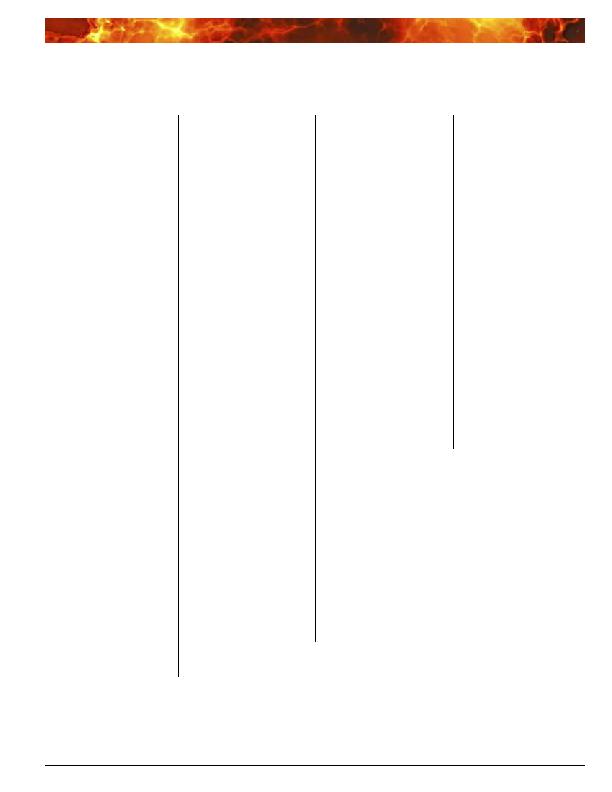
Hazardous Location
Classifications for
Elevator Equipment
The following is an overview of
hazardous location classifications
as they apply to elevator
equipment. This is intended to give
elevator sales, technical and field
personnel a better understanding of
the hazardous location
designations and the equipment
available to meet these
requirements. The actual processes
employed to define and assign
hazardous location designations
are complex and beyond the scope
of this summary. For complete
detail and installation instructions
see Article 500 of the National
Electrical Code.
General
Hazardous location elevator
equipment is necessary in any area
where the possibility of fire or
explosion exists, or may exist
because of flammable gases or
vapors, flammable liquids,
combustible dust, or ignitable
fibers. These types of dangers are
officially classified by location
(Class, Division, and Group)
depending on the properties of the
flammable vapors, liquids or
gases, combustible dusts or fibers
that may be present and/or the
likelihood that a flammable or
combustible concentration or
quantity is present.
From an elevator contractor
perspective it is safe to say that if
there is any likelihood that a fire or
explosion could conceivably
happen, hazardous location
equipment should be installed,
even if not specified by the
customer.
Class I Area
Classification
Areas in which flammable gases
or vapors are or may be present in
the air in quantities sufficient to
produce explosive or ignitable
mixtures are Class I.
Group A, B, C & D - Defines the
type of combustible gases in the
Class I location atmosphere.
Class I Area Groups:
Division 1 and 2
A (acetylene)
B (hydrogen)
C (ethylene)
D (propane)
Class II Area
Classification
Areas where combustible metal,
carbonaceous dust, or other
combustible dust such as flour,
grain, wood, etc., are or may be
present in the air in quantities
sufficient to produce explosive or
ignitable mixtures are Class II.
Group E, F, & G - Defines the
type of combustible dust in the
Class II location atmosphere.
Class II Area Groups
Division 1 & 2
E (metals --- Div. 1 only)
F (coal)
G (grain)
Class III Area
Classification
Areas that are hazardous because
of the presence of easily ignitable
fibers or flyings, but are not likely
to be in suspension in the air in
quantities sufficient to produce
ignitable mixtures are Class III.
Class III Groups
Division 1 & 2
None.
Division 1 Area
Classification
A Division 1 location is one in
which the ignitable or combustible
gases, vapors or dust can exist
under normal operating conditions.
Division 2 Area
Classification
A Division 2 location is one in
which the ignitable or combustible
gases, vapors or dust are stored,
handled, processed or used, but
normally confined within closed
containers or systems, or dispersed
by positive mechanical ventilation.
In this division the hazard is
created by accidental rupture of
containers or systems, or
equipment failure.
NEMA Classifications
Hazardous location enclosures are
rated based on the Class and
Group to which they will be
installed. These are:
NEMA 7 -
Enclosures for use in
locations classified as Class I,
Groups A, B, C, or D.
(Combustible gases)
NEMA 9 -
Enclosures for use in
locations classified as Class II,
Groups E, F, or G. (Combustible
dust).
NEMA 4X -
Enclosures for use
in Class 1, Division 2 locations if
used in conjunction with
hermetically sealed contacts.
Water/Corrosion Resistant
Enclosures are constructed to
provide a degree of protection
against falling dirt, rain, sleet,
snow, windblown dust, splashing
water and corrosion.
Summary &
Recommendations
To summarize these hazardous
location classifications for elevator
applications: (1) the Class and
Group designation specifies if the
exposure is gaseous or
combustible dust and (2) the
Division specifies if the hazard is
always present or exists only when
a problem occurs.
Because the Class I or II, Division
1 category indicates that the hazard
exists under normal conditions it is
our recommendation that elevator
components used have a NEMA 7
or 9 rated enclosure. This is the
most stringent application.
In Class I or II, Division 2 areas
exceptions to the enclosure rating
are allowed. For elevator
applications in Division 2, general
purpose enclosures are permissible
if used in conjunction with
hermetically sealed contacts. For
maximum protection the general
purpose enclosure should be
NEMA 4X rated.
Order Toll-Free: 1 800 252 1910 · www.cjanderson.com · Fax: 1 708 867 5467
61
Let Us Help You With Your Next Project
D
De
effiin
niin
ng
g H
Ha
az
za
ar
rd
do
ou
us
s L
Lo
oc
ca
attiio
on
ns
s
